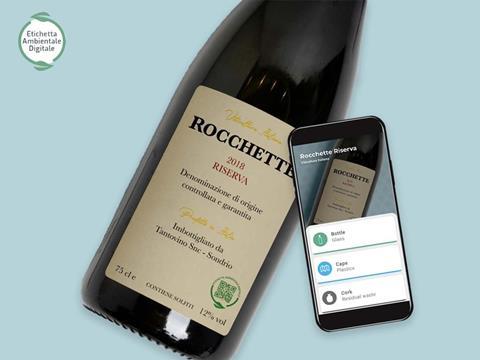
As Italy’s national deadline requiring companies to include information for consumers on the material contents and final destination of their packaging approaches, Giunko srl launches a QR- or barcode-enabled label that connects to an online database of geolocated information.
As part of the Circular Economy Package – adopted by the European Commission in 2018 – manufacturers will be obliged to inform citizens about their packaging’s material composition and end of life.
Italy was one of the first countries to begin the process of integrating this directive with national legislation in 2020, announcing that producers and suppliers had until January 1st, 2022, to comply. While existing symbols are unlikely to be eliminated entirely, there will be a requirement for companies to clearly signal, in a ‘common language’, information encompassing two essential factors: where the material comes from and where it goes after use. Companies who do not comply with this directive risk fines of up to €40,000.
However, according to research by EconomiaCircolare.com and Junker, 1 in 6 environmental labels on the Italian packaging chosen for the study were incorrect, incomplete, or missing. The study suggested that of the 90 labels examined for the study, only 40% of the indicators used to identify the packaging’s composition and end of life were easily understandable by users – undermining the purpose of the Circular Economy directive.
On this note, the implementation of the directive is not without challenges, as pointed out by key packaging players. For example, the diversity of waste disposal technologies and recycling practices between regions in Italy means that packaging often features phrasing such as “check the provisions of your municipality”, which can be confusing for consumers and discourage them from recycling a product. Meanwhile, others have pointed out that packaging often has very little space to provide the amount of information that may be needed to meet the directive.
Yet there remains a clear demand from consumers for packaging with clear and environment-focused labels. A YouGov survey commissioned by the Carbon Trust in 2020 found that 82% of people in Italy supported recognisable labels with information on a product’s carbon footprint and company efforts to reduce this – one of the highest levels of support in Europe.
In May 2021, the use of digitals solutions including QR codes and digital applications, was encouraged by the Italian Ministry for Ecological Transition.
Responding to this endorsement and to some of the challenges of meeting the labelling directive, Giunko has launched a Digital Environmental Label (EAD) that draws on the potential of QR-codes and barcodes – which already feature on most packaging and are familiar also to consumers.
The barcode on packaging that uses the Guinko solution is linked with a database of packaging materials available through the company’s Junker smartphone application. The app is already an established product in Guinko’s portfolio, released over five years ago, reportedly used by more than 2 million Italian households, and including information from more than 1.7 million classified products.
Combined with geolocated information and the app’s database, Guinko’s EAD offers clarity on issues such as geographical differences in waste management. According to the company, the disposal information for each product is validated on a national scale and in with specific regional rules for waste sorting.
To help consumers understand the components of packaging, the database includes abbreviations and acronyms for materials, alongside additional information on the company’s sustainability. The aim is to help consumers access comprehensive information on their packaging, understand the products they are buying, and become more aware of their purchasing habits.
The database can also be accessed directly by consumers by scanning the QR-code on relevant packaging, while the information can also be embedded within the websites of Giunko’s customers. It offers information in 10 different languages.
Guinko says that its solution has been acknowledged by CONAI, the National Packaging Consortium, as the “best practice for environmental labelling”. The company adds that the solution is popular with companies in sectors including cosmetics, wine, and tobacco where packaging dimensions are often small.
Noemi De Santis, CMO for Giunko srl, comments: “The digital option is a smart and innovative way to address the legislative challenge about the environmental label.
“Furthermore, it gives you more benefits than a paper-based label: easy to use, always up-to-date, customizable, available in several languages, it does not take much space on the packaging and gives more information than a traditional label”.
“The European Union has made a challenge. Companies should take it as an opportunity to give consumers clear environmental labels, which really talk to them, and to promote their effort for more sustainable products.”
“We have the necessary technologies and know-how,” De Santis concludes, “They just need to catch them and rely on our competences and experience in the field.”
















